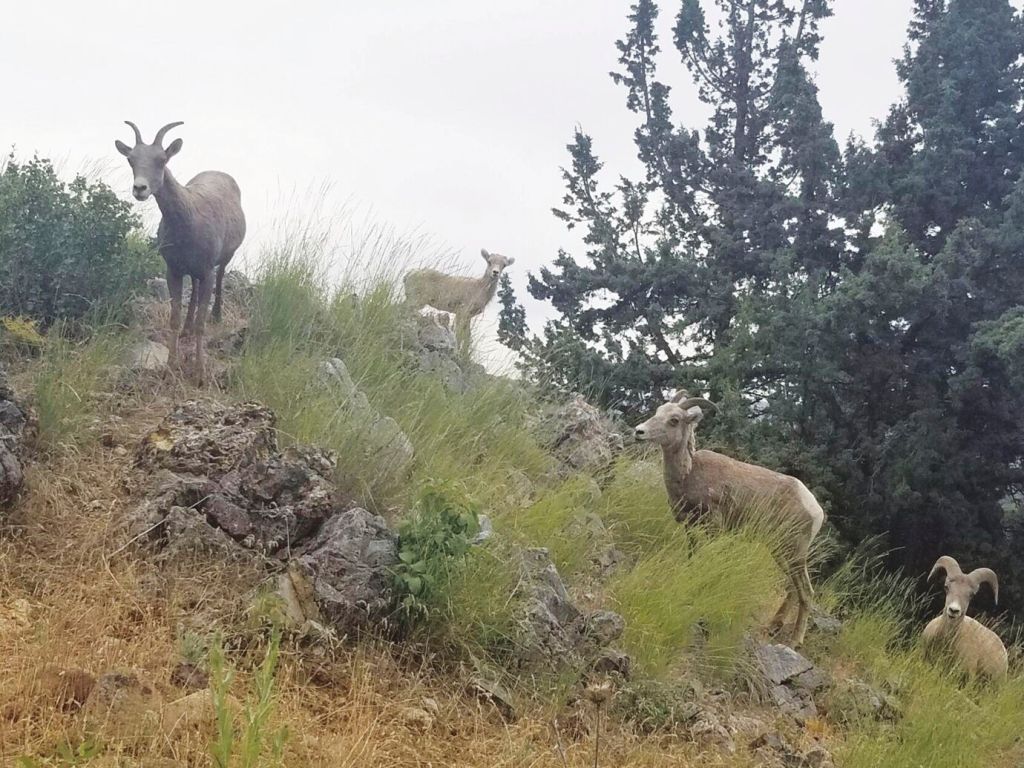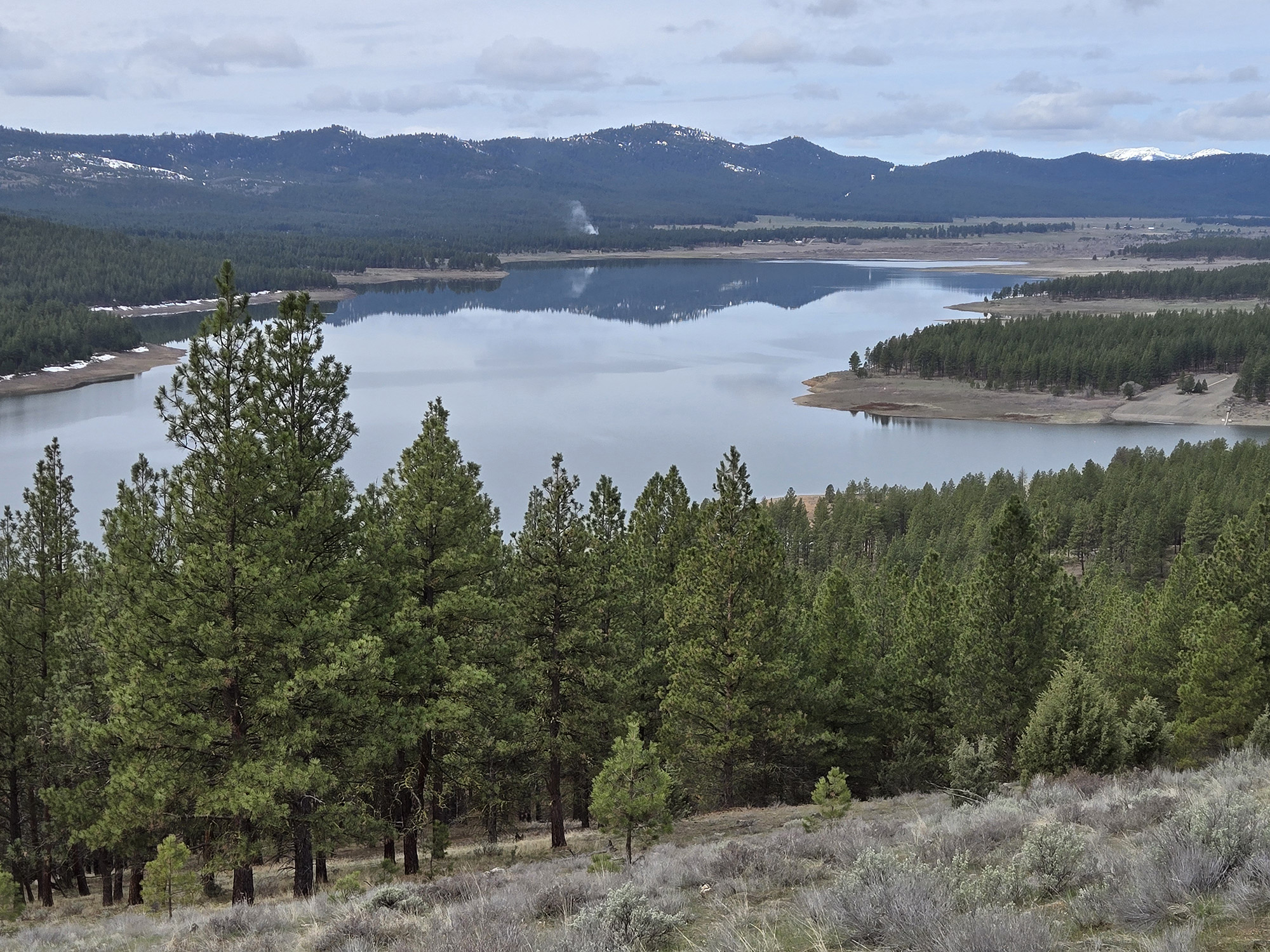Bacteria ravages bighorn lambs
Published 3:00 pm Monday, August 30, 2021
By JAYSON JACOBY
Trending
jjacoby@bakercityherald.com
A bacterial infection continues to wreak havoc on lambs in Baker County’s two bighorn sheep herds.
A state wildlife biologist said officials will continue to strive, through annual testing, to identify adult sheep that constantly shed the bacteria, and then euthanize those animals to try to protect the herds.
Trending
“They’re not faring well at all,” said Brian Ratliff, district wildlife biologist at the Oregon Department of Fish and Wildlife’s (ODFW) Baker City office. “But I think there’s a very good possibility that with enough effort, and some luck, we will get through this.”
The effort could take four to five years, Ratliff said on Monday morning, Aug. 30.
Biologists first became aware of the problem in February 2020, when dead bighorns were found near the Snake River Road at the county’s eastern edge. Those sheep are part of the Lookout Mountain herd, Oregon’s biggest herd of the Rocky Mountain subspecies with about 400 sheep prior to the bacterial outbreak.
Later in 2020 biologists also confirmed that the same strain of Mycoplasma ovipneumoniae bacteria had infected bighorns in the county’s other herd, in the Burnt River Canyon between Bridgeport and Durkee.
The Burnt River Canyon bighorns, which previously numbered about 85 animals, are of the California subspecies, which are somewhat smaller than Rocky Mountain bighorns.
Biologists believe that all of the 65 to 70 lambs born in the Lookout Mountain herd in the spring of 2020 died from pneumonia, which results from the bacterial infection.
Ratliff estimated that at least 75 adult bighorns from the Lookout Mountain herd also died in 2020.
An aerial survey of the herd in late 2020 turned up about 250 sheep, compared with 403 in a 2018 aerial census.
To maintain the herd population requires a minimum of 20 lambs per 100 ewes, Ratliff said. The average ratio for the Lookout Mountain herd is 38 lambs per 100 ewes, and the number ranged from a high of 67 per 100 to a low of 24.
Ratliff said biologists were initially optimistic at the start of this summer that the worst of the outbreak had passed. As of mid June, biologists hadn’t found any dead lambs from the 2021 crop, nor any that were coughing or otherwise appeared to be sick.
“We started out really, really good,” Ratliff said.
But the situation quickly turned bad.
Once ewes and lambs started to congregate in large groups, as they typically do during summer, due in part to the scarcity of water sources, people started reporting dead lambs in the Lookout Mountain unit, Ratliff said.
(Based on previous testing of lambs, biologists know they are not infected, by their mother, prior to birth, he said.)
As of Monday, Ratliff said, ODFW knows of just five lambs from the Lookout Mountain unit that have survived.
He said biologists haven’t found any lambs in the Burnt River Canyon herd, although he said those sheep are harder to track due to the terrain.
Sheep in the Burnt River Canyon began dying around October 2020, and Ratliff believes sheep from that herd crossed I-84 earlier in the year, mingled with Lookout Mountain bighorns and became ill, then returned and began spreading the bacteria among Burnt River Canyon sheep.
Trying to identify ‘chronic shedders’
ODFW’s focus is on finding which bighorns, from both herds, are chronically shedding the bacteria, regardless of whether those animals are actually ill.
Ratliff said even a few of these chronic shedders can keep the bacteria circulating throughout a herd and continue to decimate each year’s lamb crop.
He’s especially concerned about ewes that are chronic shedders, since the female sheep spend much more time in close contact with other ewes and with lambs.
Rams, by contrast, generally don’t mingle with ewes and lambs until November, so a ram that’s a chronic shedder isn’t as likely to spread the bacteria as widely.
Last fall, ODFW, with financial aid from the Confederated Tribes of the Umatilla Indian Reservation, as well as the Oregon and national chapters of the Foundation for North American Wild Sheep, captured 25 bighorns from the Lookout Mountain herd. Although all 25 of those sheep had antibodies in their blood showing they had been infected with the bacteria, just four of the 25 were shedding bacteria at that time, Ratliff said.
Biologists fitted all those sheep with tracking collars so they can be captured again this year and retested, Ratliff said.
This tracking and testing campaign will be expanded dramatically this year, with a goal of capturing 140 more bighorns, including some from the Burnt River Canyon herd.
The strategy is a “two strikes and you’re out” concept, Ratliff said.
Bighorns that are identified as chronic shedders for two consecutive years will be euthanized, he said.
Source of bacteria remains mystery
Ratliff said biologists don’t know how the Lookout Mountain herd was initially infected with the bacteria.
Mycoplasma ovipneumoniae bacteria are not known to be carried by cattle, but domestic sheep can be infected.
Domestic sheep graze on a public land allotment, overseen by the Bureau of Land Management, in the Lookout Mountain unit, Ratliff said. None of the domestic sheep that graze on that allotment has been tested for the bacteria.
Sheep from two other domestic flocks near Richland, at the north end of the Lookout Mountain unit, were tested in 2020 and none was carrying the Mycoplasma ovipneumoniae bacteria, Ratliff said. A llama owned by a resident along the Snake River Road was also tested, and was also negative for the bacteria.
Ratliff said the strain of bacteria in both Lookout Mountain and Burnt River Canyon herds has not been detected in bighorns in Idaho, which can potentially mingle with Oregon bighorns.










